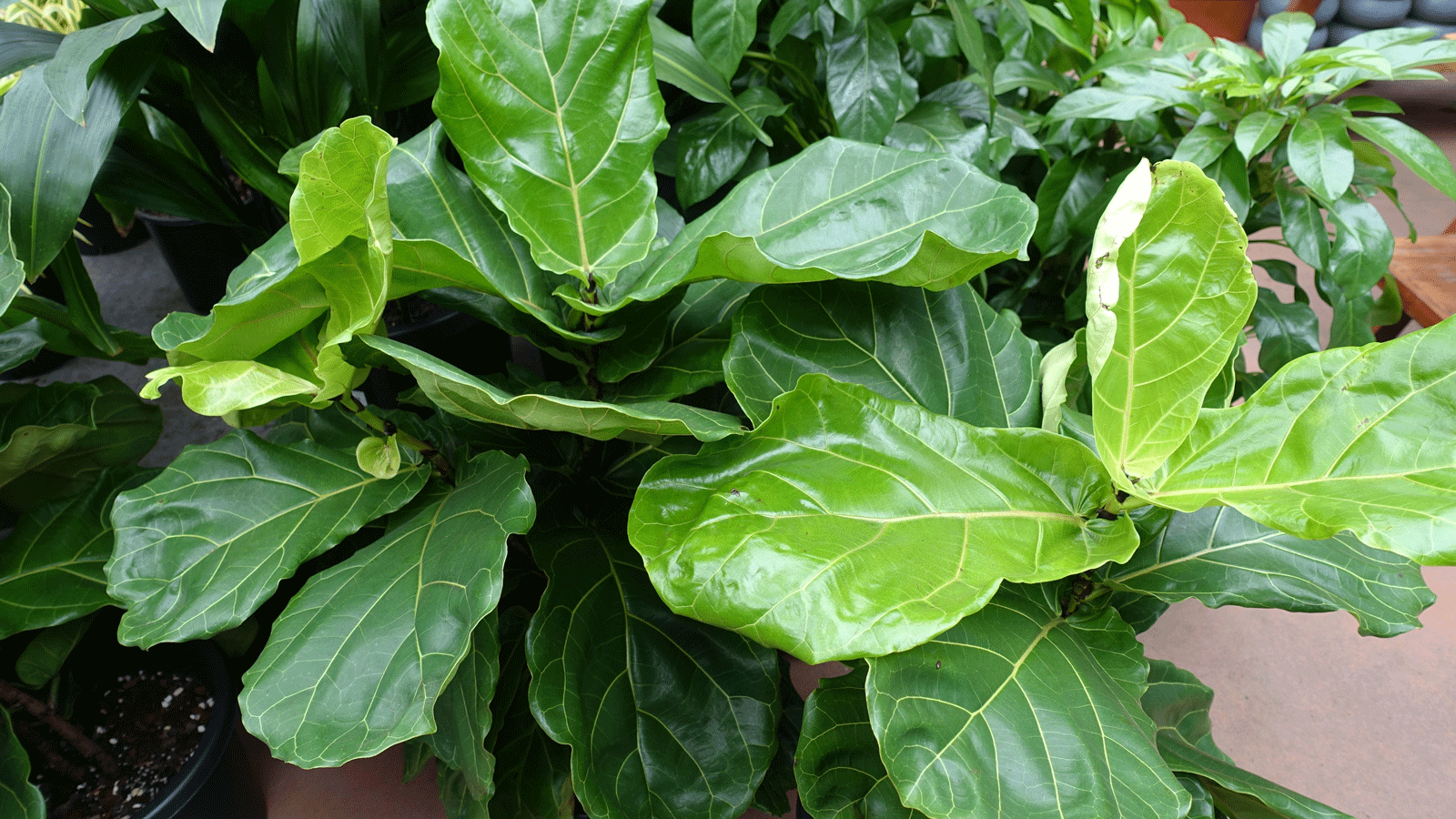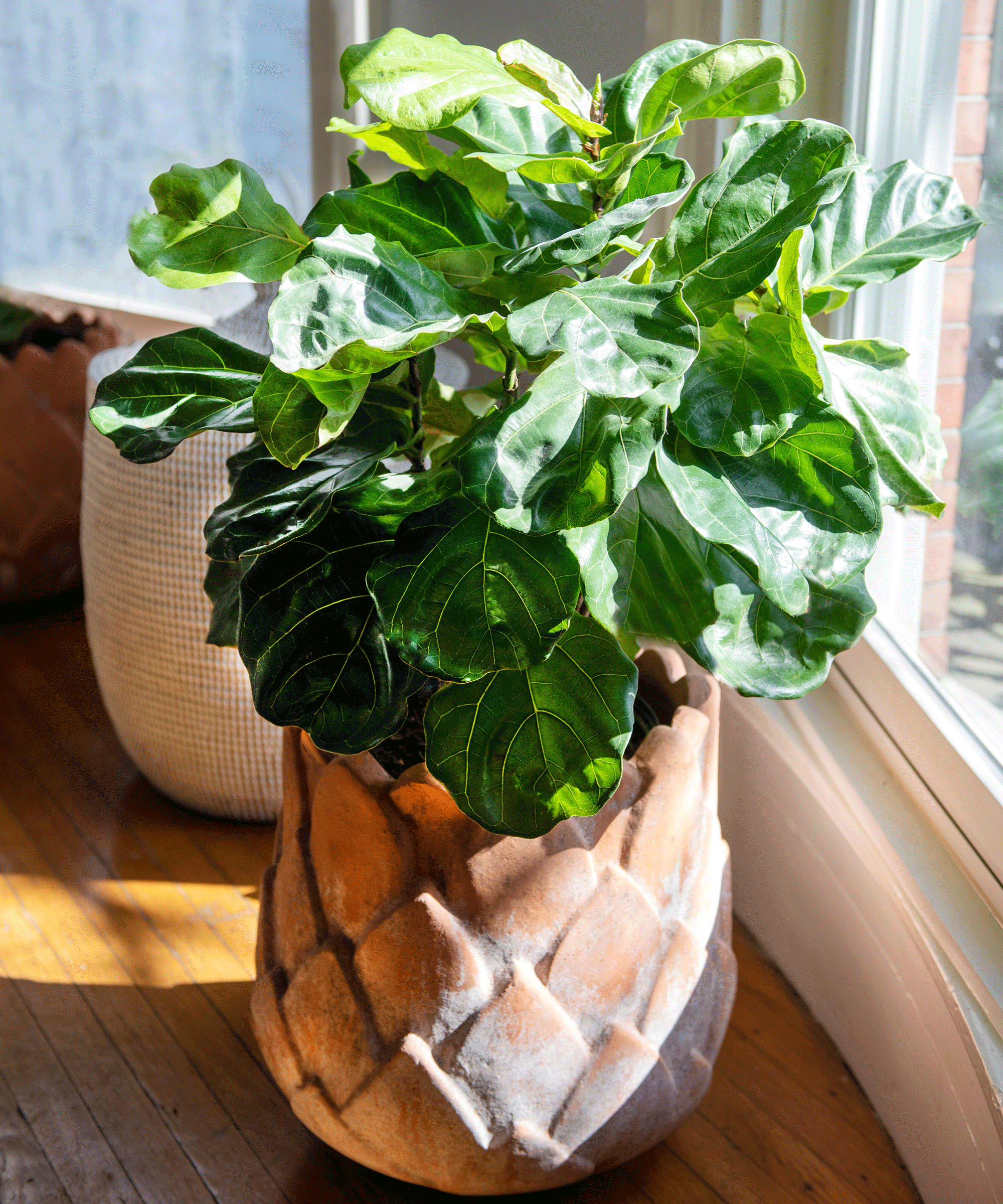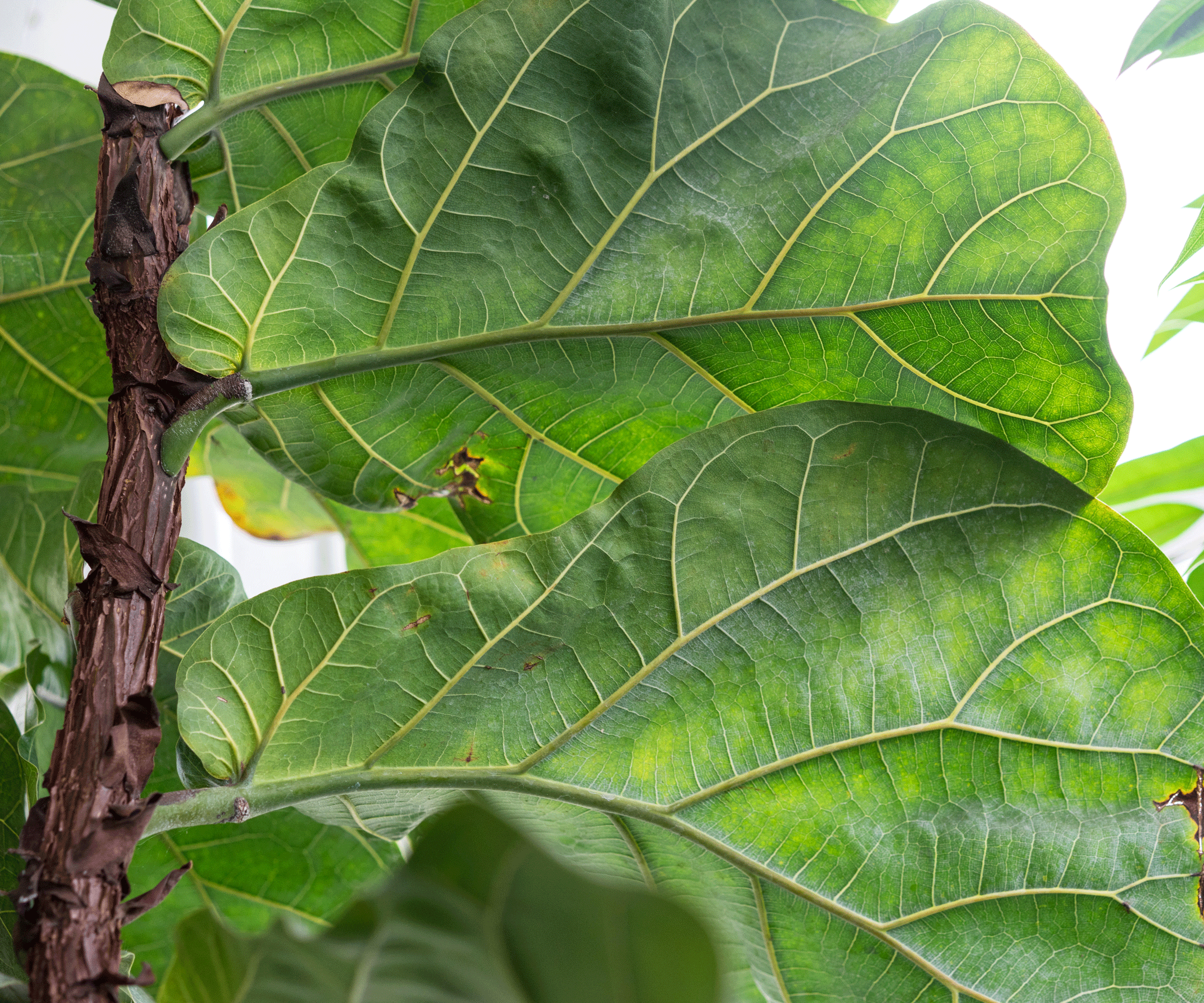Why is my fiddle leaf fig dropping leaves? Experts reveal the common causes
These are the key signs to spot so you can take action and stop this leaf drop problem in its tracks


If you notice your fiddle leaf fig starting to drop leaves remember that it's natural for plants to lose leaves occasionally as part of their natural cycle. So first you need to establish whether or not you think the leaf loss is serious as it might simply be a case of older leaves dropping off to make way for fresh new ones.
When a fiddle leaf fig drops leaves there are often clues as to why this is happening. For example, if the lost leaves are towards the base of the plant this is generally fine as these are the oldest leaves, so they're probably dropping to make way for healthy new growth at the top.
But there are other indications that a fiddle leaf fig dropping leaves could be a real cause for concern. It's a good idea to get to know your plant well when caring for a fiddle leaf fig. That way you'll soon learn to spot the danger signs when leaf dropping is something you need to deal with right away.

Make sure your fiddle leaf fig isn't in direct sunlight

Sarah Wilson has been writing about gardens since 2015, covering everything from garden design to houseplant care. She has studied introductory garden and landscape design as well as floristry. A proud houseplant parent, she enjoys tending to her collection of more than 50 indoor plants. Fiddle leaf figs are one of her favorite types and she finds it super-stressful whenever she finds a dropped leaf.
3 reasons why your fiddle leaf fig is dropping leaves
Find out the reason why your fiddle leaf fig is dropping leaves so that you can keep your plant in tip-top condition. As long as you nip the problem in the bud now your plant can still make a full recovery and stay in pole position as one of the best indoor plants in your collection. See if any of these sound like familiar scenarios...
1. Your plant is in temporary shock
A really common cause of leaf drop is that you've moved your plant and it's not happy about it. Fiddle leaf figs aren't keen on change and are best left well alone as long as they seem to be thriving where they are.
'One of the first reasons to consider when it comes to why your fiddle leaf fig is dropping leaves is that it could be due to shock,' says botanist Jennifer Green of positivebloom.com. If you have recently relocated your fiddle (say you're switching your room around), it can quickly become stressed. It won't adapt to new surroundings easily and as a result will start to drop leaves.
If you’ve recently relocated your fiddle plant to a spot where there is less light, the plant will also be under stress because of this. It could also be a reason why the leaves are turning brown. There may also be a change in humidity levels, which may both be lower than your plant was used to previously.
Design expertise in your inbox – from inspiring decorating ideas and beautiful celebrity homes to practical gardening advice and shopping round-ups.
If on the other hand you moved your plant because you know it's now in an ideal spot for fiddles then remember it will take time for it to adjust to the new location so be patient and monitor any leaf drop carefully.
2. Your fiddle plant is dried out
Another major cause of leaf drop in fiddle leaf figs is exposure to very dry air or strong sunlight. 'You should never put your fiddle plant near any devices that emit heat,' says Jennifer Green. This includes heating vents, which regularly pump out dry air. Remember fiddles like humid conditions as they hail from the rainforest. By the way, fiddles don't like drafts either so never put them near cooling devices or drafty windows either.
Strong sunlight is going to cause issues too. The ideal spot for a fiddle plant is a bright location without direct sunlight. Remember also to keep your plant dust free by cleaning your fiddle leaf fig's leaves as they need bright light and carbon dioxide to thrive and dusty leaves will hinder this.
3. Your plant has root rot due to overwatering
Another common cause of a dropped leaves is root rot, which is usually the result of watering your fiddle leaf fig incorrectly. If you see brown or black spots on the leaves your plant has dropped this is probably due to overwatering. Brown spots can also be caused by an insect infestation so be sure to check over your fiddle for pests too.
The next step is to check the roots. 'Healthy fiddle leaf figs have white fleshy roots that wrap snugly around the pot,' says Mo Bhula of thebotanicalarchive. 'If you find the roots are black and beginning to become mushy this is a sign of overwatering.' You will need to chop them out and then repot your fiddle leaf fig.
Mo also points out that if your fiddle's roots are white but crispy this can indicate an underwatering problem. An overwatered fiddle leaf fig unfortunately often looks like an underwatered fiddle leaf fig, and can also drop leaves, so always do a root check as a way to differentiate.

Yellow and brown discoloration on fiddle fig leaves can indicate root rot due to overwatering
What do the leaves on an overwatered fiddle leaf fig look like?
If you overwater your fiddle leaf fig, first you'll notice leaf discoloration, primarily yellowing and brown spots. 'An overwatered fiddle leaf fig will typically appear wilted and show signs of chlorosis (yellowing of the leaves),' says horticulturalist Brody Hall of theindoornursery.com. As its health continues to worsen, the leaves show small spots, turn brown at the end of the leaf, then blacken, and subsequently drop.
'Mushy soil with an unpleasant smell is another tell-tale sign of an overwatered fiddle,' adds Jennifer Green. 'The leaves may curl and the plant may also droop.'
If you notice any of these signs, you need to take your fiddle leaf fig out of its container and inspect the root system. Mushy and discolored roots are indicators of root rot caused by overwatering.

Lifestyle journalist Sarah Wilson writes about garden design and landscaping trends for Homes & Gardens. She has studied introductory garden and landscape design, and also has an RHS Level 2 qualification in the Principles of Plant Growth and Development. She is a regular contributor to Homes & Gardens and Livingetc. She has also written for Country Living, Country Homes & Interiors, and Modern Gardens magazines